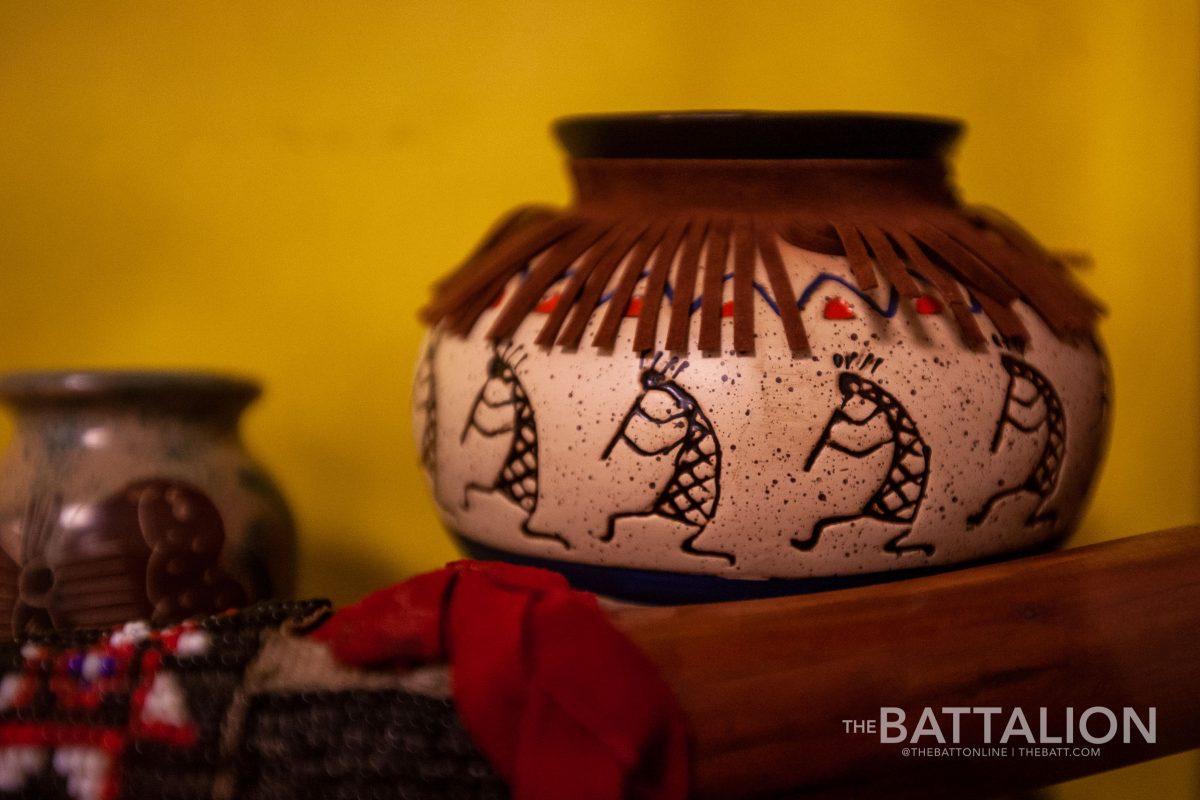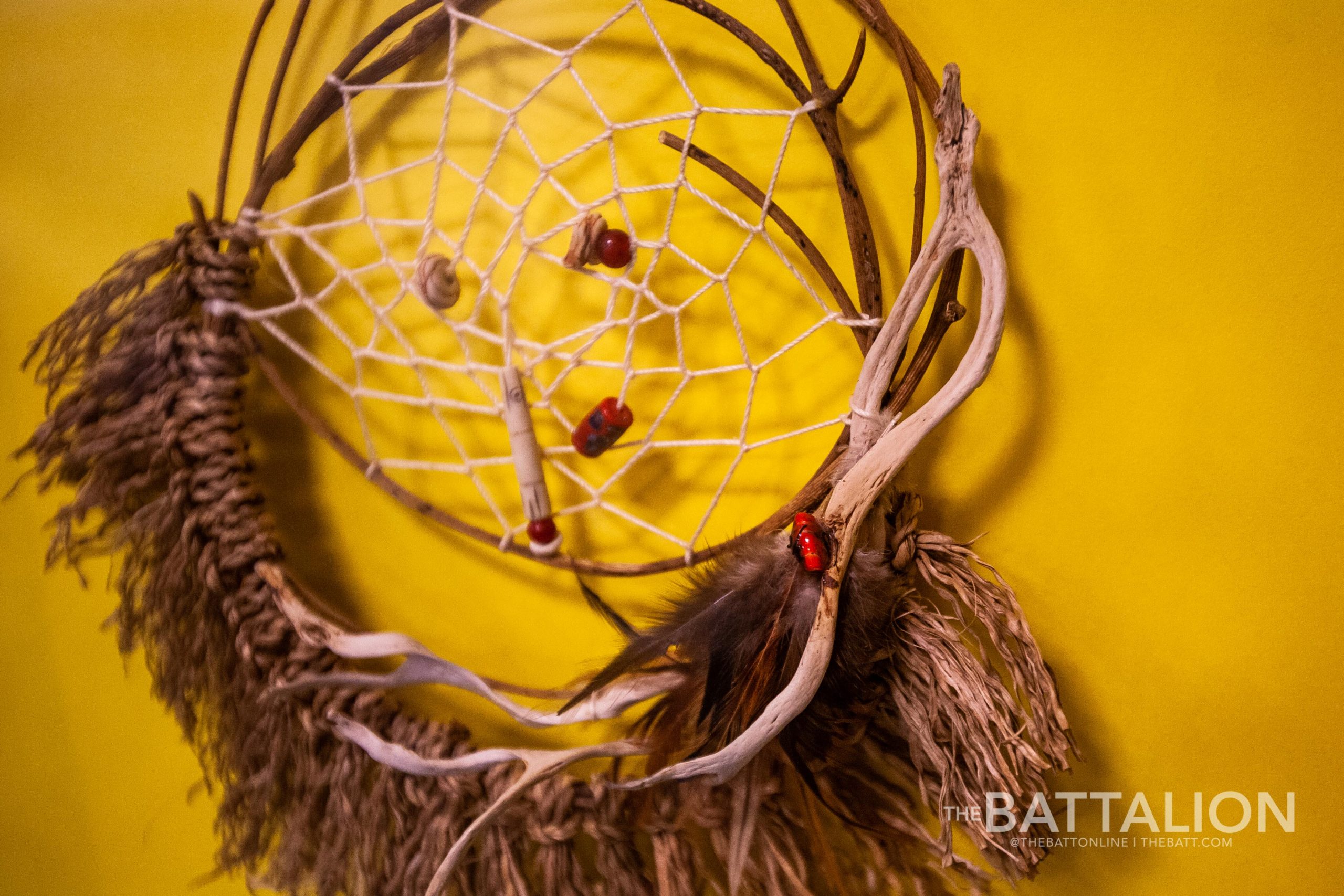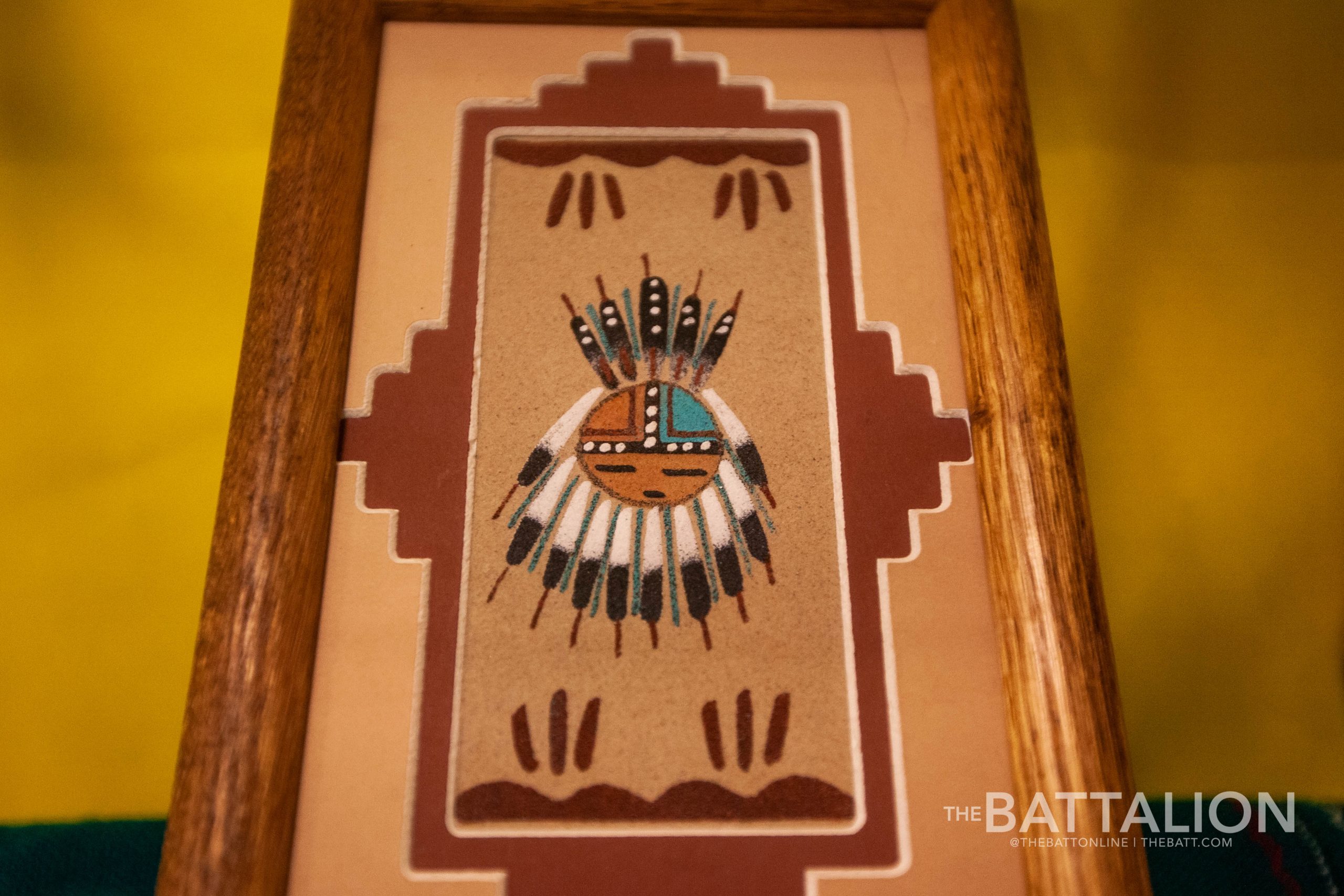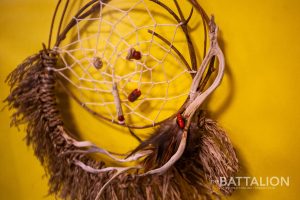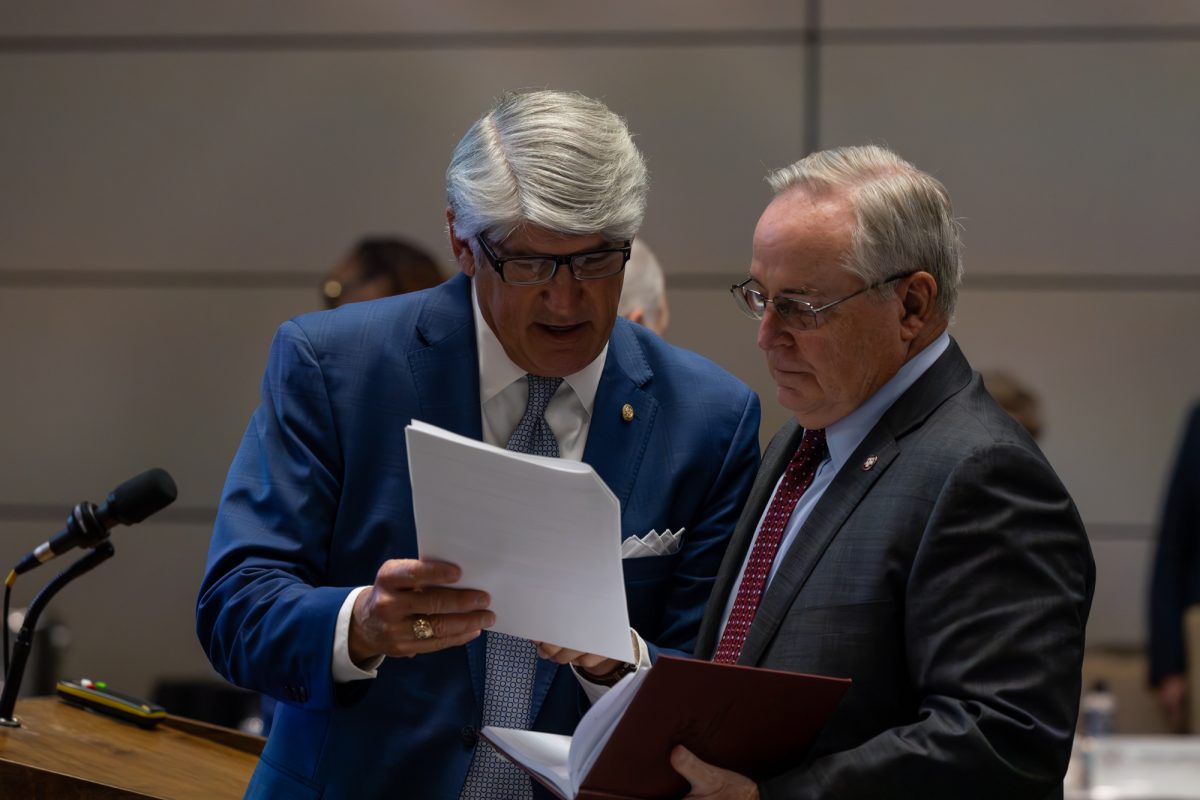Native American Heritage Month has people asking for greater recognition of Native Americans at Texas A&M and across the country.
Observed during November, Native American Heritage Month is intended to be a time of reflection and learning about the culture and struggles of Native Americans. President George H.W. Bush declared November be used for the heritage month on Aug. 3, 1990.
Assistant professor Marcela Fuentes will teach Native American Rhetorics and Literatures in Spring 2020. She said some individuals do not see Native Americans in a modern context and visualize old depictions of the people. She said she will use literature to help modernize those mainstream perceptions.
“[‘There There’ by Tommy Orange] gives an image of the Native American, the contemporary Native American,” Fuentes said. “One thing that happens a lot is people think Native Americans are just running around like you see in westerns: somebody in a headdress, the romanticized image of some guy on a paint horse, maybe a bow and arrow. That’s not real.”
Eldrena Douma is a Pueblo storyteller who preserves the stories of her family and educates others on Native American cultures. Douma said while the passing of stories keeps tradition alive, the learning and appreciation of Native American culture should not be limited to just one month.
“I grew up with storytelling,” Douma said. “It was all around me. It was like air. You just did it every day. Personally, I think that Native American history should be taught throughout the year because there’s something that happens every single month. The main thing is the importance of historical story, especially the family story.”
Fuentes said the importance of Native American Heritage Month is the opportunity to address the lack of representation of Native Americans and promote awareness of not only that community, but others as well.
“It is important to remember that there are other people than just the mainstream,” Fuentes said. “It’s important for everyone to know, not just for Native Americans to have that visibility, but also for people of other communities to be aware that there is a big cultural history… history that is perhaps connected to your own history.”
Health and Spanish senior Sara Postoak serves as the webmaster of the Native American Indigenous Student Organization. Postoak said NAISO seeks to promote Native American culture in the community and serves to connect members with their culture while they are at A&M.
“NAISO is a cultural organization on campus, the only Native organization on campus,” Postoak said. “What we try to do is promote the Indigenous and Native tribes culture throughout the A&M campus and [the] Bryan and College Station area while also trying to be a community touchstone.”
Postoak said there are multiple modern issues that Native Americans face, including matters concerning the environment, language revitalization, children being adopted out of their families, forceful sterilization of women, football team names and icons, and the return of museum items back to tribes. However, Postoak said one of the most pressing issues is that of missing and murdered indigenous women, or MMIW.
“We have a lack of communication between the tribal governments and the federal government,” Postoak said. “So a lot of the time, missing indigenous women fall through the cracks. There’s also instances where if indigenous women are raped, and the tribal government tries to handle it, technically, they’re not allowed to pass judgement outside of the tribe.”
Sociology Ph.D. student Ried Mackay said many people are misinformed about the realities faced by Native Americans. Mackay said they are often ignored, with current Native American Aggies neglected due to their small numbers in comparison to other student populations.
“A study called Reclaiming Native Truth involved over 13,000 people across 11 states,” Mackay wrote in an email to The Battalion. “One of the most haunting things it found was that 40 percent of respondents thought Native Americans are extinct. Texas A&M-College Station alone has 180 Native American students, and though we are a small population, we are no less deserving of recognition.”
Mackay said Native Americans are more than willing to tell their story, but they are often not asked to share their experiences. Mackay said younger Native Americans should fight for the preservation of their culture.
“Native Americans have a proud history, and we are all incredibly willing to share it,” Mackay said. “I believe that it is vital for Natives of my generation and the younger ones to stand up and fight for visibility, fight for language and fight for ourselves and the future of our people.”
Professor Angela Hudson specializes in Native American history and serves as the primary advisor for NAISO. Hudson said there have always been Native American Aggies in A&M’s history, but to this day, there are no specific services being offered to Native students.
“Right now, to my knowledge, [there are] not any student services specifically dedicated to Native American students,” Hudson said. “There are some offices and services that are for diverse student populations. But Native American students tend to be overlooked because their population is consistently small.”
Postoak said NAISO is looking to increase its size and number of activities, and any student is free to join the organization if they wish, regardless of their background.
“We’d love to have more members,” Postoak said. “Next semester we’re planning for more cultural activities with our members. But we are open to anyone to join because we’re promoting unity. We’re promoting our culture, so you don’t have to be a Native or Indigenous student to join.”
Aggies celebrate Native American Heritage Month
November 21, 2019
Photo by Photo by Meredith Seaver
The Department of Multicultural Services has a Native American Heritage Month display in the MSC, including pottery and a dreamcatcher.
0
Donate to The Battalion
$2065
$5000
Contributed
Our Goal
Your donation will support the student journalists of Texas A&M University - College Station. Your contribution will allow us to purchase equipment and cover our annual website hosting costs, in addition to paying freelance staffers for their work, travel costs for coverage and more!
More to Discover




